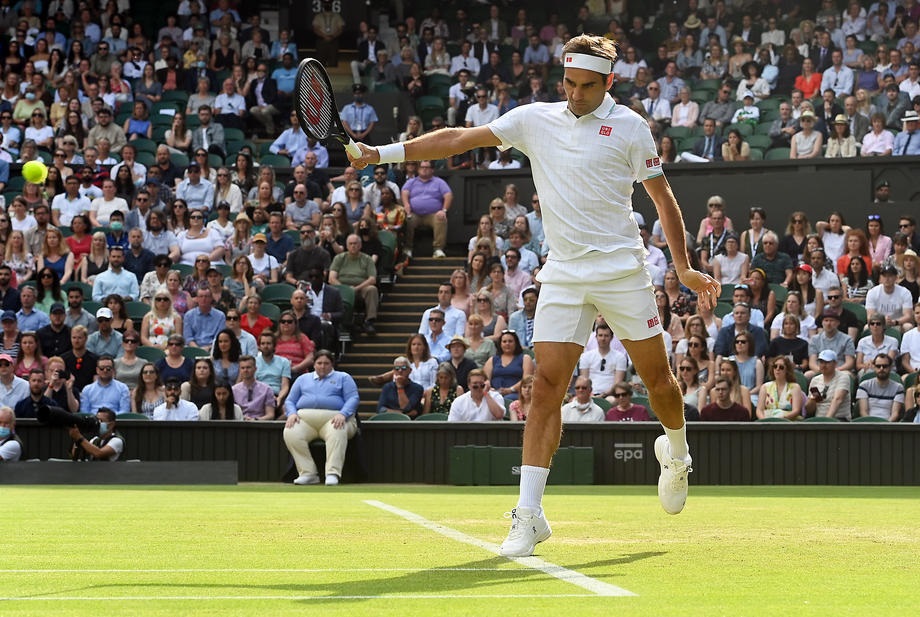- Barcelona Open Schedule and Draws for Saturday, April 20, 2024
- Munich Open Schedule and Draws for Saturday, April 20, 2024
- Swiatek Defeats Raducanu to Set Up Stuttgart Semifinal vs. Rybakina
- Munich Open Schedule and Draws for Friday, April 19, 2024
- Barcelona Open Schedule and Draws for Friday, April 19, 2024
- Home For Sale Minutes From The Indian Wells Tennis Gardens
- Munich Open Schedule and Draws for Thursday, April 18, 2024
- Barcelona Open Schedule and Draws for Thursday, April 18, 2024
- Munich Open Schedule and Draws for Wednesday, April 17, 2024
- Barcelona Open Schedule and Draws for Wednesday, April 17, 2024
- Rafael Nadal Makes Winning Return in Barcelona
- Tennis Channel to Televise Rafael Nadal’s Return in Barcelona on Tuesday
- Barcelona Open Schedule and Draws for Tuesday, April 16, 2024
- Munich Open Schedule and Draws for Tuesday, April 16, 2024
- Munich Open Schedule and Draws for Monday, April 15, 2024
Roland Garros Trumps U.S. Open Tennis By Allowing Fans On Site But Risks Losing Players, Even Serena Giving Great Thought
- By Alix Ramsay
- Updated: September 8, 2020

By Alix Ramsay
It is Tuesday. We are almost there: we have reached the quarter-finals of the US Open and we are on the home stretch.
All in all, it has not been too bad. The major plus is that tournament is still running. When the health authorities arrived with their clipboards and posh suits last week, everyone held their breath: was this the end? As it turned out, Benoit Paire’s positive test caused problems but, after a lot of confusion, several arguments and a group of players left fuming and locked in their hotel rooms, the crisis was dealt with. More or less.
A little more transparency from the USTA, not to mention some clearer rules from the start, would have helped but they were thinking on the hoof. They are the Pioneer Corps in this as grand slam tennis tries to get back into business. As a result, there were bound to be moments of panic and uncertainty but, in general, the players did what they were told, got on court, played their matches and got off court without any major problems. And that was the whole point of the operation.
Watching all of this from the other side of the Atlantic has been the French Tennis Federation (FFT). In less than three weeks, they will throw open the doors of Roland Garros to players, fans and media alike. This is a major step forward from what we have seen in New York – and it is a big risk.

In New York, everyone knew that the tournament would be held in an enclosed environment with the bare minimum of people allowed on site. The location of the BJK Tennis Center helped with this, it being well away from the hubbub of Manhattan, and it allowed the USTA to find player hotels that could be sealed off from the general public. Well, one of them was at any rate. There were reports of family weddings and other social gatherings at the other hotel but we shall draw a veil over that.

Paris, though, is different. The city is small – stunning, but small – and Roland Garros is very much a part of it. Keeping the players away from the public and their Covid germs is not going to be easy. And when the FFT announced on Monday that they would allow up to 11,500 fans a day to come and watch, the chances of keeping any sort of bio-bubble secure seemed rather limited.
Already, Ash Barty has pulled out due to concerns about the pandemic and also the fact that her training has been hindered by the Covid restrictions in Australia. Her coach is based in Melbourne which, at the moment is still in stage four lockdown and the state borders of Victoria are still shut. Barty lives in Brisbane, Queensland, and has not been able to travel to work with her coach and train to level she would like in order to defend her title. So she’s not going.

Now Serena Williams has cast doubt on her participation at Roland Garros. Still focused on winning that elusive 24th grand slam title in New York, she is watching developments in Paris with interest and some concern.
She has an apartment in the French capital and assumed that she would be allowed to base herself there but, on Sunday, the FFT told the players that they would be obliged to stay in one of two designated player hotels. That immediately rang alarm bells for Williams.
She has been staying in a private house on Long Island these past few weeks for the simple reason that she thinks it is safer. In her own home (albeit temporary, rented home), she can control the environment; in a hotel there are factors she cannot control such cleaning staff, catering staff, a whole range of extra people she could come into contact with. To be safe, she opted to spend a small fortune and avoid all possible danger. But she will not be allowed to do that in Paris.
“I was hoping to stay at my apartment in Paris, but, you know, I’m just taking it a day at a time,” she said after reaching the quarter-finals on Monday afternoon. “I feel the French, they are doing the best that they can. You know, it’s hard. Every organisation, every country is trying to do the best that they can in this pandemic, so I can’t point fingers and tell them what to do, because I’m not running the tournament.”
What she cannot fathom is why the players must stay at a designated hotel, presumably to form a safe, player bubble, and yet 11,500 complete strangers will be allowed into that bubble every day to watch the action.
“If there are fans, then we should be able to stay elsewhere, then,” she said. “Yeah, that’s interesting, because there is no private housing but there’s fans.

“It’s just for me I’m super conservative because I do have some serious health issues, so I try to stay away from public places, because I have been in a really bad position in the hospital a few times. I don’t want to end up in that position again, so I don’t know. I’ll just do my best for me – I try to keep a 12-foot distance instead of six.
“I’m honestly taking it one day at a time. I’m going to have to make the best decision for my health. Obviously, it will be good for me to talk to the organisers just to see how that works with the crowd and how we will be protected.
“They have to make the best decision for them, and I have to do what’s best for me. But I think it should be OK. I think there is a lot of factors that hopefully they are thinking about – and I’m sure that they are – as this is a global pandemic. It’s just I still have some questions.
“But I’m really kind of focused on New York but it’s kind of hard because, you know, these Grand Slams are so close to each other this year.”
In order to keep the Roland Garros site as secure as possible, the area will be split into three sites within the site. Court Philippe Chatrier and its surrounding smaller courts will have 5,000 fans within its confines; Court Suzanne Lenglen and its surrounding courts will have another 5,000 while the new Simonne-Mathieu court (which has no surrounding courts) will be allowed 1,500 fans. So, if you have a ticket to one of those three show courts, you can watch whatever is going on within your zone but nowhere else. And there will be no ground passes sold.
But in between New York and Roland Garros will be the Italian Open – and that opens up a whole new raft of problems. Problems that Williams is none too sure she wants to deal with, much as she loves Rome (it is where she met her husband, after all).
“You know I love Rome,” she said with a smile. “I have a lot of friends in Rome.
But I don’t know. I’m literally living day to day, because there are so many organisational things that every player has to do and we have to figure out. And Rome, you know, there is also organisational things there that I’m not sure how it works, if I can bring my daughter, so that’s going to be interesting.”
If it was a tough call for European players to make the commitment to play in the United States then it seems to be an equally tough call for American players to commit to playing in Europe. Let’s face it: it’s a tough call for anyone to travel anywhere these days.
As Australia’s John Millman, the US Open quarter-finalist in 2018, suggested in his tweet on Tuesday, if the New York bio-bubble experiment was only a qualified success, just wait until we all get to Europe.
I’ve heard lots of complaints about the US Open. Some, I think could be warranted but on the whole considering it was the first tournament back, it was a decent return to tennis. I’m concerned if we’re complaining now what happens when we get into the European season..
— John Millman (@johnhmillman) September 8, 2020
“I’ve heard lots of complaints about the US Open,” he wrote. “Some, I think could be warranted but on the whole considering it was the first tournament back, it was a decent return to tennis. I’m concerned if we’re complaining now what happens when we get into the European season.”
And if that is what the decent, mild-mannered, down-to-earth Millman thinks now, who knows what the more volatile players will be saying in a few weeks’ time.
About Alix Ramsay
Free 10s Whenever Newsletter
![]() Subscribe And Keep Up With The Latest Tennis News And Gossip For Free!
Subscribe And Keep Up With The Latest Tennis News And Gossip For Free!






